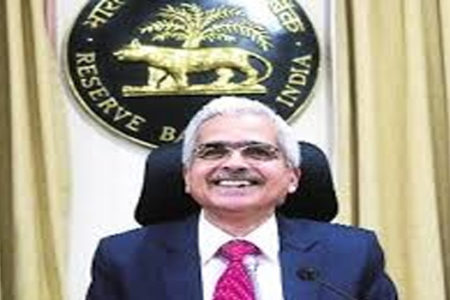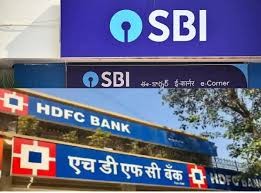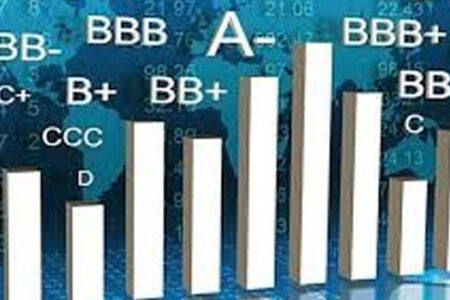Since the first rate hike of the current cycle that started in early May 2022, the first monetary policy of FY24 this week will probably be Reserve Bank of India (RBI) Governor Shaktikanta Das’s toughest.
In May last year, the Indian central bank had raised its policy rate by 40 basis points (bps) in an off-cycle meeting of the Monetary Policy Committee (MPC), its rate-setting body, to fight rising inflation that had remained above the upper band of its flexible target since January 2022. One bps is a hundredth of a percentage point.
Exactly two years before this, in May 2000, the RBI had cut the policy rate by an equal quantum to its historic low to support a Covid pandemic-hit slowing economy.
A series of three 50-bps hikes followed the 40-bps hike before the RBI started dialling it down, first to a 35-bps hike in December 2022 and then to another 25-bps hike in February, taking the policy rate to 6.5 per cent at the last MPC meeting. Meanwhile, the stance of the policy has remained unchanged — “withdrawal of accommodation”.
Two of the six members of the MPC opposed the last rate hike. In his interaction with the media, Das spoke of a “mood of optimism” but refrained from giving any forward guidance in February.
Will the RBI press the pause button this week? Or, will we see yet another rate hike to tame inflation, which, after remaining above the upper band of inflation target for 10 months in a row, dropped below 6 per cent for two months, to rise again in January and February? It’s going to be a close call.
Why? First, let’s take a look at what has happened between the February policy and now on the global banking turf.
In March, first the Silicon Valley Bank, a specialised lender to technology start-ups, collapsed — the largest bank failure in the US since the 2008 financial crisis. Within days, the regulators abruptly shut down Signature Bank, a lender to law firms and real estate companies, to contain any spillover into the broader financial system. Elsewhere, Swiss banking giant UBS stepped in to rescue crisis-hit rival Credit Suisse even as the investors remain worried about German banking giant Deutsche Bank’s vulnerability to external shocks.
Since the crisis broke out, apart from the US Federal Reserve, Bank of England and European Central Bank, which have raised their policy rates between 25 and 50 bps, the Swiss National Bank, the central bank of Norway, the Central Bank of the Republic of China (Taiwan) as well as the Central Bank of Nigeria have raised their rates.
While the Central Bank of Brazil, Central Bank of the Republic of Turkey, People’s Bank of China, Bank Indonesia and the Central Bank of Russia have maintained the status quo, the Central Bank of Argentina and Bank of Japan have cut their rates.
What matters to us is the action of the US Federal Reserve. We can scream from the rooftop that the world’s fifth-largest economy is decoupled from the rest of the world; the fact is the US Fed policy continues to have a significant sway on our rate trajectory apart from domestic inflation and growth.
The market is divided on its expectations from the policy. I am told seven of the 11 economists, who attended the customary pre-policy meeting of the RBI governor last week, favoured a hike in policy. One of the seven made a pitch for lower than a 25-bps hike, while the rest were for pressing the pause button.
To use the analogy of a car, the RBI will not press the accelerator or shift to a higher gear. It can either maintain the same speed (read yet another 25-bps hike) or shift to a lower gear (a 10-bps hike). Or even press the brake (pause).
Let’s first discuss why the RBI could apply the brake.
Indeed, the Federal Open Market Committee (FOMC), the Fed’s rate-setting body, has gone for a 25-bps hike, taking the policy rate to 4.75-5 per cent, but it is a dovish hike. The forward guidance on future rate hikes has been diluted as the Fed juggles with two balls in the air — price stability and financial sector stability.
It is not sure whether the next FOMC meeting will go for another 25-bps hike and, even if it does, that could well be the last hike in this cycle. The so-called dot plot, a chart that summarises the FOMC’s outlook for the Federal funds rate, now projects it at 5.1 per cent by end-2023.
This opens the door for the MPC to refrain from any rate hike. Indeed, retail inflation has risen in the past two months and core inflation continues to remain sticky above 6 per cent, but inflation will drop in March and FY24 as the so-called base effect will catch on. What’s the big deal about core inflation? It has remained sticky for a decade now. Since January 2012, the average core inflation has been 5.84 per cent.
More importantly, downside risks to growth are visible now. In February, the RBI had projected 6.4 per cent GDP growth for FY24. Anecdotally, demand contraction is being seen in many segments. The mortgage market expansion is slowing as the rising interest rates are hitting the prospective home buyers hard. The year-on-year credit offtake has dropped from 17.9 cent in October to 15.7 per cent in early March. Typically, the last quarter of a financial year sees the highest credit offtake but that’s not happening.
So, the RBI should not go for a rate hike. The stance should remain withdrawal of accommodation since that will serve the purpose of tightening. Surplus liquidity in the system has continuously been coming down — it’s now less than 1 per cent of GDP, the lowest in nearly four years. Incidentally, last Friday, the last day of FY23, the call money rate soared beyond 8 per cent, its four-year high, because of tight liquidity.
Finally, the threat of a current account deficit is no longer looming large. The fall in global commodity prices, including oil, augurs well for India’s external accounts and eases the pressure on rupee.
So, the rate remains where it is, 6.5 per cent, and the stance unchanged. If needed, the RBI can always hike the rate in June, or even later.
There are equally forceful arguments for yet another rate hike, by 25 bps, taking the policy rate to 6.75 per cent. And, stopping there.
The inflation target is 4 per cent (+/- 2 per cent) and not 6 per cent. By the RBI’s own estimate, the average inflation will be 5.3 per cent in FY24. But with the spectre of El Niño haunting the prospects of monsoon and unseasonal rain damaging the rabi crops, most believe it will be around 5.5 per cent. Can Das afford to drop his mantle of an inflation fighter?
It has already been factored in that the GDP growth in FY24 would be muted compared with the current year. And, isn’t 6.4 per cent growth (RBI projection for FY24) good enough? Even if it drops marginally, very few countries will be able to match it.
Finally, India’s financial sector stability is rock solid; it won’t come in the way of the RBI’s objective of maintaining price stability. Simply put, it can afford to err on the side of caution and raise the policy rate to 6.75 per cent — a sort of insurance hike that can always be reversed in coming meetings, if required.
Will a hike of a smaller dose, say 10 bps, serve any purpose? What will it signal?
I guess if the RBI goes for a hike, it could change the stance from withdrawal of accommodation to neutral. There should be a strong message that we are reaching the end of the rate hike cycle. That could be done by simply saying inflation has peaked.
It will be a close call.



